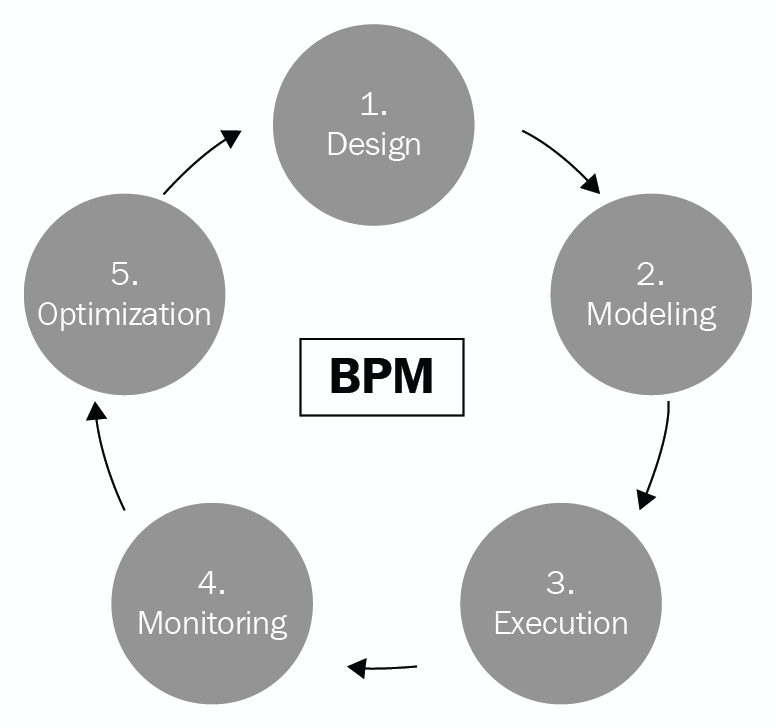To achieve an appropriate analysis of business processes through an objective approach to researching and analyzing, it is first necessary to define what these are. Generally, two types of definitions are used when identifying and analyzing business processes—descriptive and genetic.
Business process analysis is a continuous process that usually consists of five steps—Design, Modeling, Execution, Monitoring, and Optimization. This process can be seen in the following diagram:

Any job that is done in an enterprise or institution can be considered a business process. However, should this definition be further explored and promoted, it is necessary, at least temporarily, to adopt a definition that is involved internally with the process and provides answers to the following questions:
- What is the purpose of existence of the process?
- What are the reasons and the goals of the process?
- What is the history of the process?
- What is its inner structure of the process?
- How does the process work and under what conditions does it work?
- What resources are needed for the process to work? Who are the participants in the process?
The answer to these questions is the so-called genetic definition.
According to the genetic definition, a business process is a connected set of activities and decisions that are driven by an external incentive to achieve a measurable goal of the organization. Business processes take input information or resources, and after processing them, the input is converted into specific products or services important to the customer or user. Let's consider that this definition works, and note that toolkit manuals that supports business process modelling use mostly similar, but incomplete, definitions.
Let's analyze this definition in more detail, as follows:
- A connected set of activities and decisions: It is understood that this is a deliberate set of actions and decisions (not a conglomerate) that lead to achieving goals and meeting the customer's or user's needs.
- Running on an external incentive: The organization does nothing and does not waste any resources if there is no demand or incentive from a customer or user. In manufacturing organizations, this incentive is a customer's order, though it does not always have to be immediate, and can be planned (which depends on the production management system).
- Specific products or services: Each process output result must be individually recognizable (meaning that no other process should produce the same outcome) and measurable.
- Of importance to the customer or user: An organization that existed for itself would not make any sense; a company exists only for its customers or users of its products or services. However, in complex organizations whose activities are organized on the value chain principle, the customer or user does not always have to be external, but may be some internal organizational unit.
It should be emphasized that this definition of a business process should be formally understood only to some degree. Practice shows that great effort in modeling is useless if, at the very beginning, no processes have been identified that fit this definition.